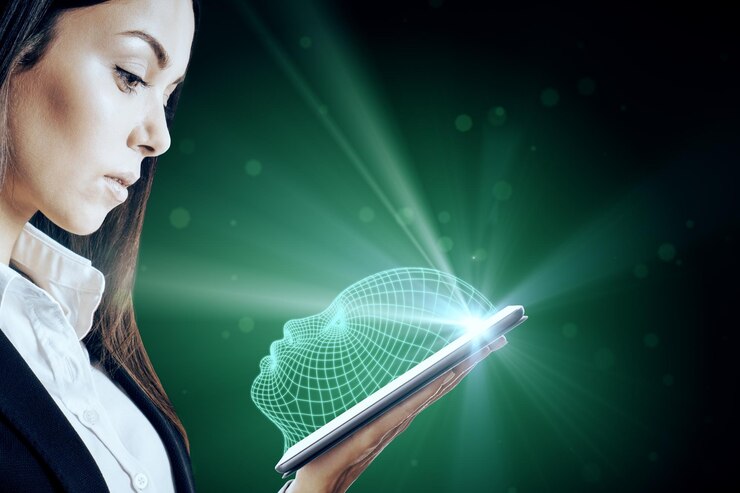5 Examples Of AI In Our Everyday Lives
4 Mins Read
Published on: 10 December 2022
Last Updated on: 05 September 2024

toc impalement
Most people associate artificial intelligence (A.I.) with futuristic computers trained to think like people in films like Star Wars and Terminator.
Although A.I. and machine learning seem like fantastic future concepts, they have a beneficial influence on how we live our daily lives.
We’ll look at five instances of how technology affects our daily lives in the paragraphs below. Although artificial intelligence (AI) is the newest buzzword in the computer world, it has existed in some capacity for many years.
The most effective applications of AI in daily life will be covered in this essay. The enhanced efficiency, accuracy, and productivity that AI brings help our everyday life in a number of ways.
Here Are The Best Five Example Of AI In Our Daily Lives:
In this article, we shall learn more about how you can put AI into use in your daily life and enhance your productivity in different fields—
1. Maps And Navigation

These applications use machine learning to grasp and identify traffic flow changes to provide route suggestions that avoid gridlock and bottlenecks.
It also considers user-reported situations, such as traffic jams or roadwork, to get the ETA (Estimated Time of Arrival) to reach your destination. Additionally, it’ll offer the fastest route taking every aspect of the road into account.
Fifty more cities will have access to Street View’s comprehensive street maps by the end of 2021. In addition, a new feature that blends augmented reality and artificial intelligence provide turn-by-turn directions directly on your phone’s camera view.
To accurately map these dense urban characteristics, we have improved our models to recognize every object in a picture simultaneously.
2. AI Assistants
Some of the most prevalent instances of AI in daily life are Apple’s Siri, Google Now, Amazon’s Alexa, and Microsoft’s Cortana. These assistants determine what you’re asking for and attempt to obtain it for you using NLP, ML, statistical analysis, and algorithmic execution.
Due to the fact that these applications learn from each and every user contact, AI plays a significant role in how they function.
Alexa from Amazon is now able to comprehend natural language and reply appropriately. Being able to interact with her takes speech recognition a step further.
The neural networks that run a digital assistant make it feasible. Though they are still in their infancy, we can already see the promise of intelligent helpers.
3. Face Detection Technology

An individual’s facial traits are mapped using facial recognition software, which then retains the information as a face print.
The program employs deep learning algorithms to compare a live recorded image to the stored facial print to confirm a person’s identification.
Researchers have paid much attention to face recognition due to the human behaviors that may be found in various security-related applications, such as airports, criminal detection, face tracking, forensics, etc.
Due to the ease of database matching, 2D photos rather than 3D are used for most face recognition applications. For example, facial recognition software will examine your cheekbones’ form or the distance between your eyes.
It depends on the database of a specific person but generally responds with the match and any connected data (such as names and addresses).
4. AI Writers And Grammar Checker
Linguists and computer scientists teach computer grammar the same way you were taught in school.
Because the algorithms were trained using high-quality linguistic data, the editor will recognize when you use a comma inappropriately.
A multilingual spelling and grammar checker is called LanguageTool. It helps correct mistakes and errors to make sure your work is faultless.
An excellent writing tool is LanguageTool. Its user-friendly layout and lack of distractions allow authors to concentrate on what’s crucial—writing.
The advancement of LanguageTool is made possible through the usage of artificial intelligence. Which proposals are AI-based and which are manually written may be seen in open source. The distinctive community of LanguageTool also values AI.
5. Chatbots

By 2020, 55% of established businesses will either have begun investing in artificial intelligence or have such plans.
Now, chatbots can “learn” from previous encounters and get better at giving the right answers and solutions.
When a real person types a message, they can determine the text’s underlying intent and then respond appropriately.
Understanding the structure and use of language is crucial for developing chatbots, which is why we utilize natural language processing (NLP) to build sophisticated AI systems.
Entities, which are pertinent pieces of information given by the user, are identified and extracted using a variety of libraries that make up NLP engines.
Read Also:


















Comments Are Closed For This Article